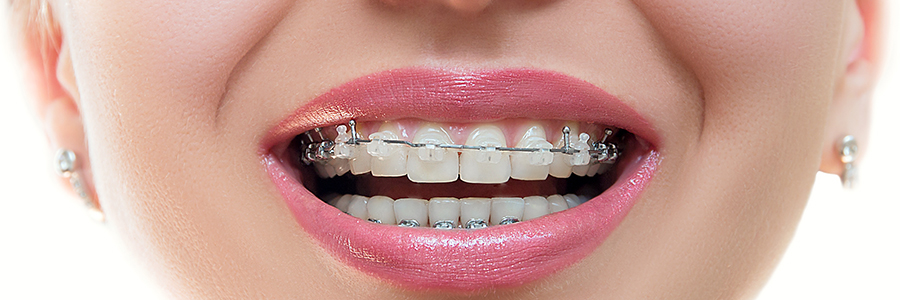Preventative Orthodontics

Traditional orthodontics consist of fixed or metal braces that are attached to the teeth and which use metal brackets combined with wires and elastics. In spite of recent innovations in orthodontics, these traditional braces are still quite widely used due to their versatility. The use of brackets enables orthodontists to precisely reposition the teeth in ways that aren't always possible with more modern systems and can provide patients with really straight teeth, giving the best possible results.
Fixed metal braces can treat most orthodontic problems, including issues with occlusion or the way the teeth bite together. They can be used to close up gaps in between teeth, to correct teeth that are rotated or protrusive, or teeth which are crooked due to overcrowding. Fixed metal braces can also be used to correct overbites where the upper front teeth close too far forward of the lower front teeth, underbites which are the opposite problem where the lower front teeth are biting too far forward in front of the upper front teeth, and open bites where the front teeth do not occlude or bite together at all, even when the back teeth are in contact. Fixed or metal braces can also be used to correct crossbites where some of the upper teeth bite inside the lower teeth.
The benefits of choosing fixed or metal braces is that the braces will be working continuously to straighten teeth, and there's no need to worry about removing aligners to clean them or forgetting where you have put them. The use of brackets ensures this treatment is very precise, and is likely to be the best way to get the most perfectly straight smile through having orthodontics alone.
The step-by-step process for having a fixed or metal brace is as follows:
- The first step is to attend a consultation to find out if metal or fixed braces will provide you with the best possible results.
- To prepare for treatment, your orthodontist will need to take x-rays, impressions and photographs of your teeth.
- Your braces can be fitted at your next appointment. Your dentist will clean your teeth and will use special glue to stick the brackets in position before attaching the wires and elastics as required or any other metal parts such as bands that may be used to move the teeth into position.
- You will need to visit your orthodontist at regular intervals so they can check the progress of treatment and make any adjustments as necessary. The braces will remain in position until treatment is completed.
- Once the braces are removed you will need to wear a retainer to ensure the teeth don't move back to their original positions.



